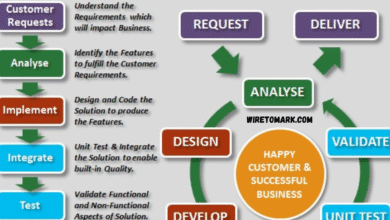Image Search Techniques Unlocking the Power of Visual Discovery

The internet is a massive visual library, and knowing how to navigate it through image search techniques can open doors to endless opportunities. Whether you’re tracking down the source of a photograph, looking for high-quality visuals for your work, or even fact-checking content, these methods make the process far more efficient. Unlike traditional text-based searches, these tools rely on pixels, patterns, and context to deliver what you need.
For professionals, image search techniques aren’t just a curiosity—they’re a vital skill. From marketers trying to understand competitor visuals to students looking for accurate resources, mastering these methods helps you work smarter, not harder. In a digital age where visuals dominate, knowing how to refine your search strategy can make all the difference.
Image Search Techniques for Everyday Use
When most people hear about image search techniques, they think of typing words into a search bar and clicking “images.” While that’s a start, the world of visual search is much deeper. Reverse image tools allow you to upload a picture and find where else it appears online, or even discover higher-resolution versions. This comes in handy when tracking down the origins of a viral meme, verifying a news story, or simply hunting for better-quality media.
Another practical everyday use is finding visually similar images. Imagine spotting a product online but struggling to find where to buy it. With the right image search techniques, you can locate identical or related items across different platforms. That’s why online shoppers, content creators, and researchers lean heavily on these methods—they save time and uncover results that text alone often misses.
Image Search Techniques for Professionals
Professionals in fields like journalism, marketing, or education often need more than surface-level results. For them, image search techniques provide accuracy, reliability, and efficiency. Journalists use them to verify authenticity by checking if a photo has appeared elsewhere under different contexts, preventing the spread of misinformation. Marketers, on the other hand, use these tools to monitor brand presence, ensuring their logos or visuals aren’t being misused.
Educators and students benefit, too. Instead of relying solely on text-based references, they can track down diagrams, infographics, and reliable imagery to support their research. By applying refined search methods, they avoid generic or irrelevant results and instead uncover resources that add value to their work. It’s a smart, effective way to use digital resources with precision.
Reverse Searching and Its Role in Modern Research
Reverse searching is one of the most powerful tools available today. Uploading a picture or pasting its URL into a search engine instantly reveals related visuals, sources, and even metadata in some cases. This can help uncover if a photo has been manipulated, which is increasingly important in an era of AI-generated content.
Modern research thrives on credibility, and reverse searching offers a way to fact-check in seconds. Whether you’re evaluating the originality of a photograph for academic work or verifying product authenticity in e-commerce, this technique ensures you’re working with reliable material. It bridges the gap between raw visuals and trustworthy information.
Visual Recognition and AI in Image Searches
Artificial intelligence has revolutionized image searches. Unlike earlier systems that relied heavily on file names and alt text, today’s AI-driven algorithms analyze shapes, colors, and even objects within photos. These image search techniques allow platforms to deliver incredibly accurate results, even when you provide minimal input.
What makes AI particularly exciting is its ability to learn and adapt. The more data it processes, the better it becomes at recognizing subtle differences. For instance, it can distinguish between different dog breeds, identify landmarks, or even suggest complementary images. This evolution makes visual discovery faster, smarter, and more useful than ever before.
Using Image Search for Creative Projects

Creatives—whether photographers, designers, or marketers—depend on visuals for inspiration and originality. Image search techniques help them avoid accidental duplication by checking whether a concept or photograph has already been widely used. This ensures fresh, unique ideas.
Beyond originality, these searches also serve as inspiration boards. Designers often use them to discover trends in color palettes, typography, and styles across industries. With just a few clicks, they can gather references that fuel creativity while ensuring their projects stand out in a crowded digital landscape.
Advanced Filters for Precision Searches
Sometimes, a simple search isn’t enough. Advanced filters allow you to narrow down results by size, type, usage rights, or even color. These refined image search techniques save countless hours when you’re looking for specific types of content. For instance, bloggers might use filters to locate royalty-free images, while businesses may need high-resolution photos suitable for print.
Filtering isn’t just about convenience—it’s about professionalism. Using the wrong type of image, especially one without proper usage rights, can cause legal headaches. Advanced filters empower you to search smarter, ensuring your results aren’t just visually appealing but also safe and practical to use.
The Impact of Mobile on Visual Searches
With mobile phones dominating our daily routines, image search techniques have naturally evolved to fit smaller screens. Apps now let you point your camera at an object and instantly find information about it, from product details to historical facts. This has transformed the way people interact with the world around them.
For businesses, mobile-driven image searches open up entirely new opportunities. Shoppers can compare prices by simply scanning a product in-store, while travelers can identify landmarks in real time. It’s quick, intuitive, and reshaping consumer behavior in powerful ways.
Challenges in Image Searching
As effective as these techniques are, they’re not without challenges. Sometimes, results lack accuracy, especially when dealing with uncommon or abstract visuals. In other cases, privacy concerns arise, particularly when personal photos are uploaded to public search engines. Users need to stay mindful about what information they share.
Another issue is over-reliance on algorithms. While AI is incredibly advanced, it isn’t perfect. Misidentifications still happen, and not every result can be trusted blindly. The human eye remains essential for interpretation, reminding us that these tools should complement, not replace, critical thinking.
The Future of Image Search
The future looks bright for visual search technology. With advancements in AI, augmented reality, and machine learning, the next wave of image search techniques will likely feel more intuitive and personalized than ever before. Imagine pointing your phone at a piece of clothing and instantly finding where to buy it, along with styling suggestions.
As these systems evolve, they will integrate deeper into everyday life. Businesses, researchers, and creatives will all benefit from more refined results and context-aware searches. This future promises a smoother, smarter, and even more visually driven internet experience.
Conclusion
Image search techniques have transformed the way we navigate the online world. From everyday users tracking down memes to professionals verifying authenticity, these tools save time, enhance accuracy, and open doors to creative inspiration. While challenges exist, the benefits far outweigh the drawbacks, especially with AI and mobile technologies making searches smarter and more accessible.



